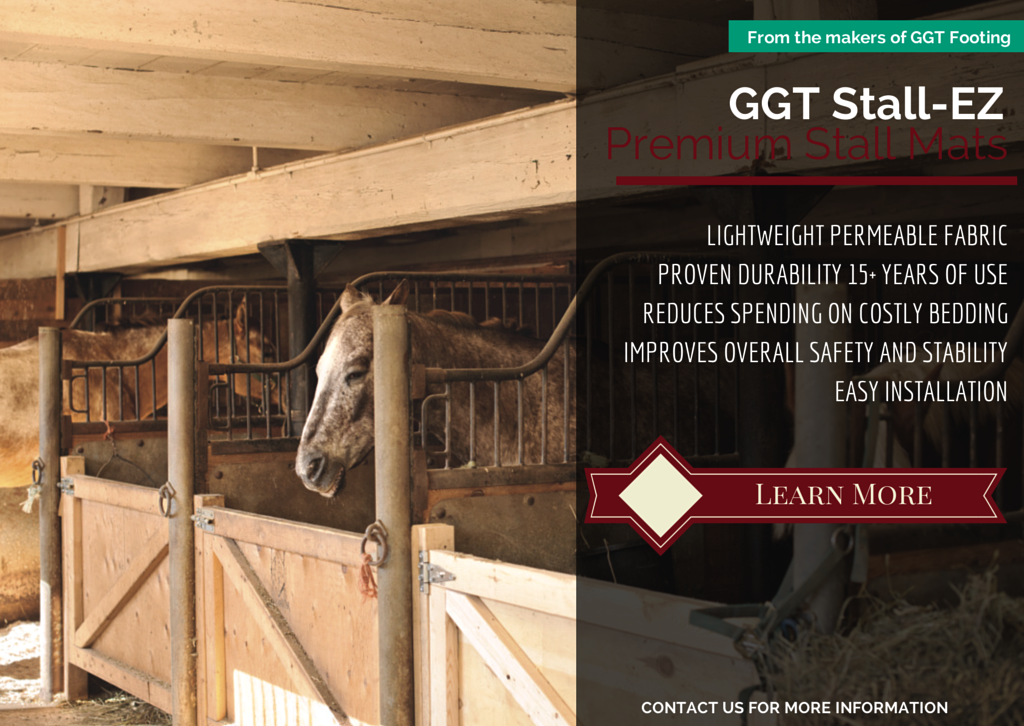The type of footing a horse is worked on is a major contributing factor to whether the horse will stay sound. One study of dressage horses found that the evenness of the surface was vitally important in preventing injuries. Wood chips were the most dangerous because they could never be turned into a completely even surface. Pure coarse sand was also dangerous because it rapidly became an uneven surface as horses worked on it.
Uneven surfaces
The unevenness of a surface was also found to be a major factor in injuries to horses in the landmark FEI study of equestrian footing. Unexpected conditions hidden within an otherwise excellent footing were more devastating to horse soundness than riding on a footing that was uniformly poor. Apparently horses can adjust their movement to protect themselves against poor footing, but have trouble adjusting to being surprised by a sudden slippery or boggy spot.
Injuries are much more common at commercial facilities/ competitions than at private arenas. There are a wide range of factors that can contribute to these statistics, but one that was mentioned in the FEI footing study was that fact that footing tends to become uneven as many horses perform the same pattern over it, such as at a competition. For example, if 60 horses jump the same course of jumps, the footing conditions for the 60th horse are going to be very different, and lot more uneven, than for the first horse.
So what can be done to improve the unevenness of footing, in hopes of reducing injuries to horses? One obvious way to reduce unevenness is to drag and groom the arena as frequently as possible. Another is to construct the base and drainage system such that the arena drains evenly. A well-drained arena doesn't develop boggy or slippery spots.

Compression
Another, and perhaps the most important factor for heavily used arenas, is to select a footing that resists compression. The "track" commonly seen around the outside of a heavily used, under-groomed arena is caused primarily by the footing compressing under the weight of the horses. A footing with particles of a uniform size, such as a pure sand surface, will compress quite easily. Footing that consists of sand mixed with additives like GGT is quite resistant to compression.
Another interesting finding in the FEI study was that horses were much more likely to suffer injuries if they competed on surfaces that were very different than the type of surface that they normally trained on. It may seem counter-intuitive, but horses that normally train at home on poor-quality footing are at an increased risk of hurting themselves when they travel to a commercial venue to compete on high-quality footing. Individuals who don't want to spend money on improving their home arenas may find themselves spending even more money on getting their horses fixed after a trip to a place with high-quality footing.
If you're interesting in avoiding horse lameness by upgrading your riding arena, don't hesitate to contact us for a consultation.


